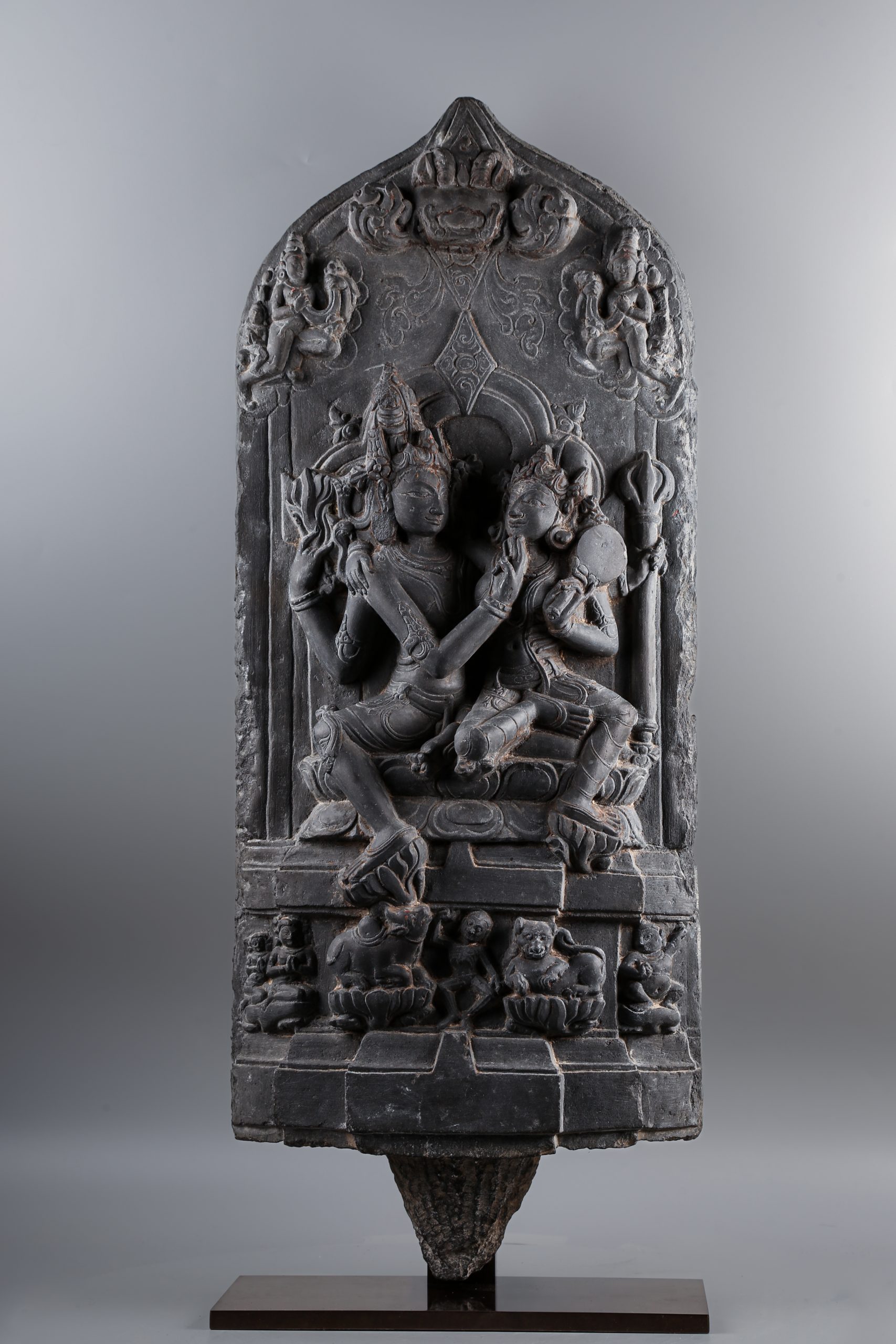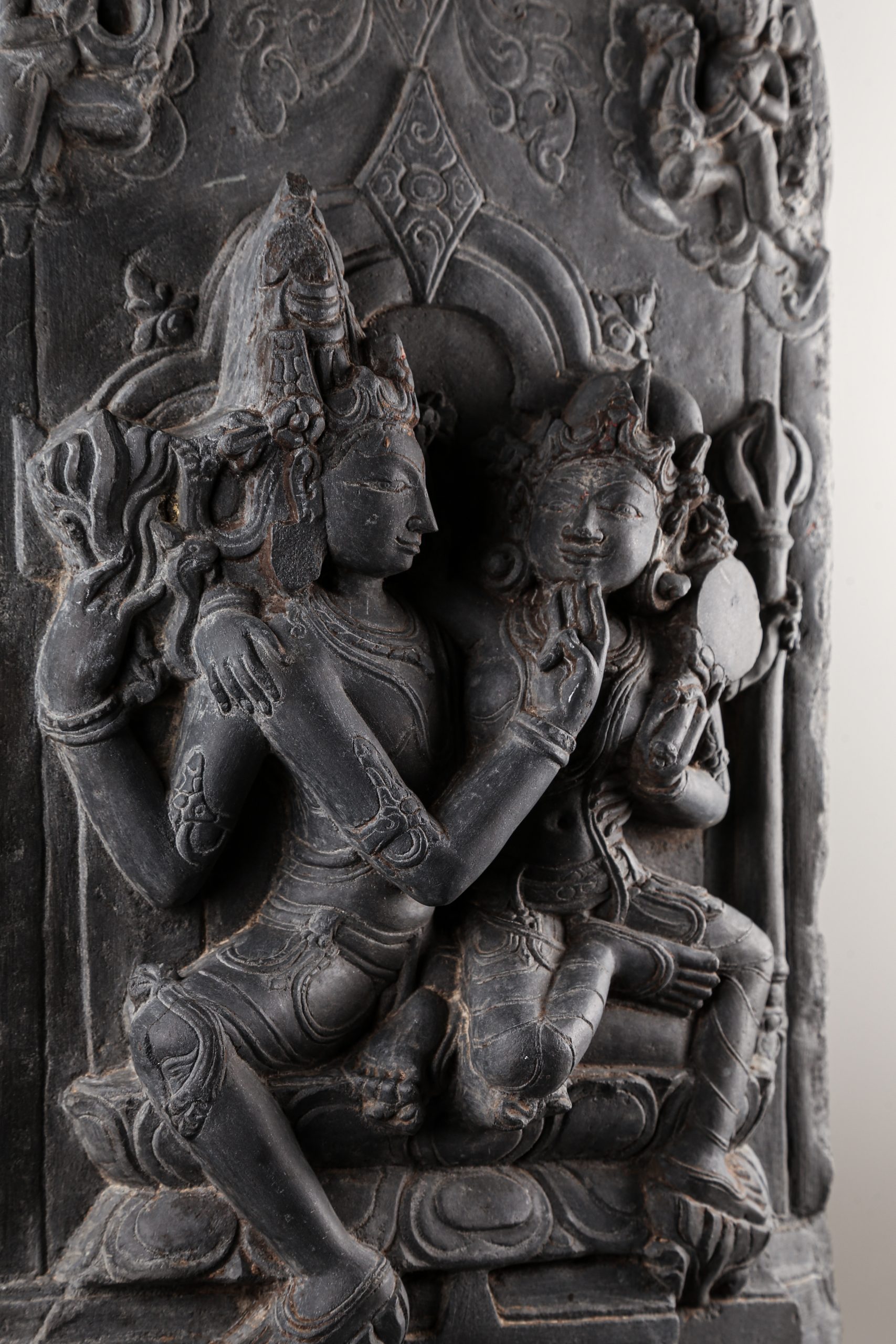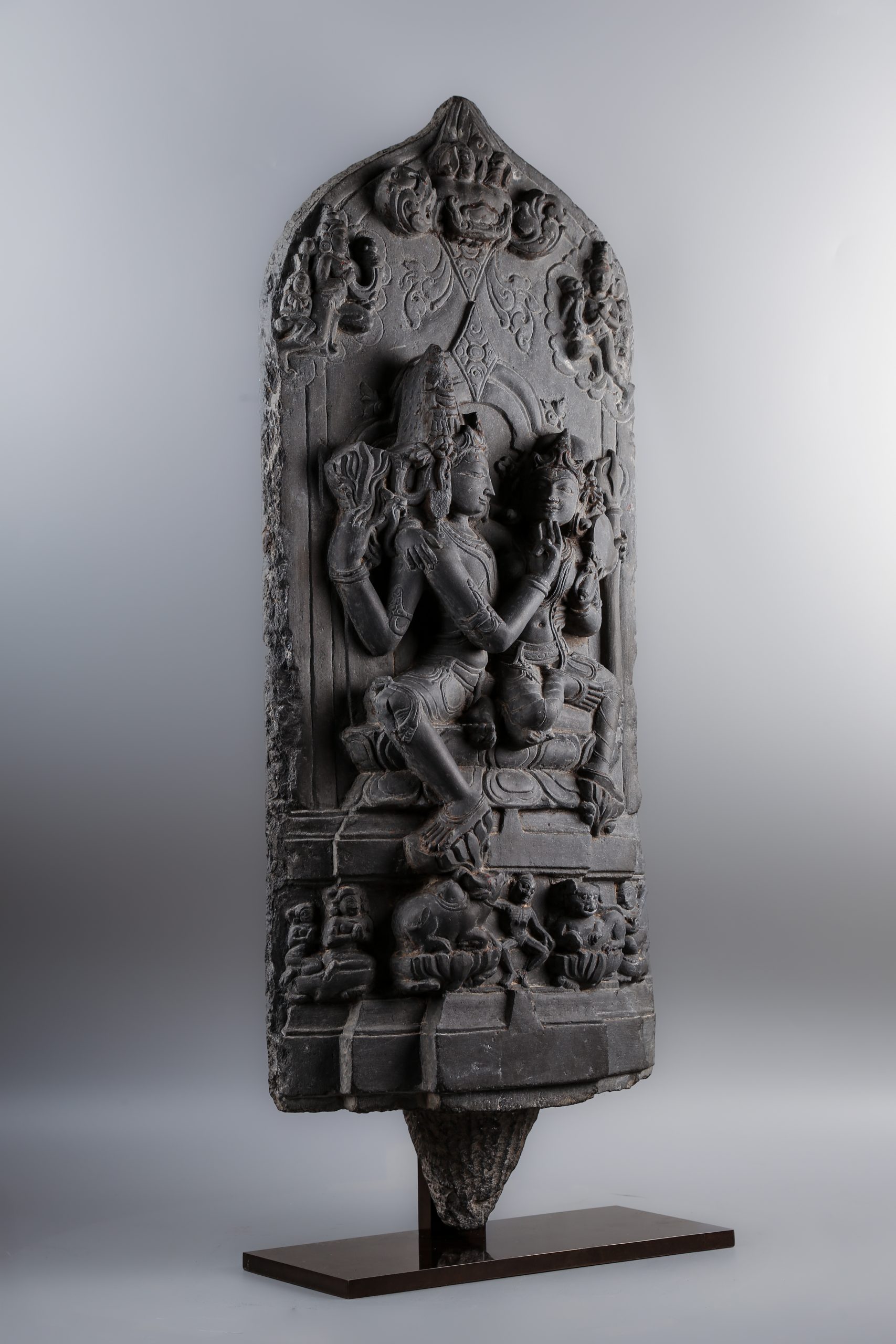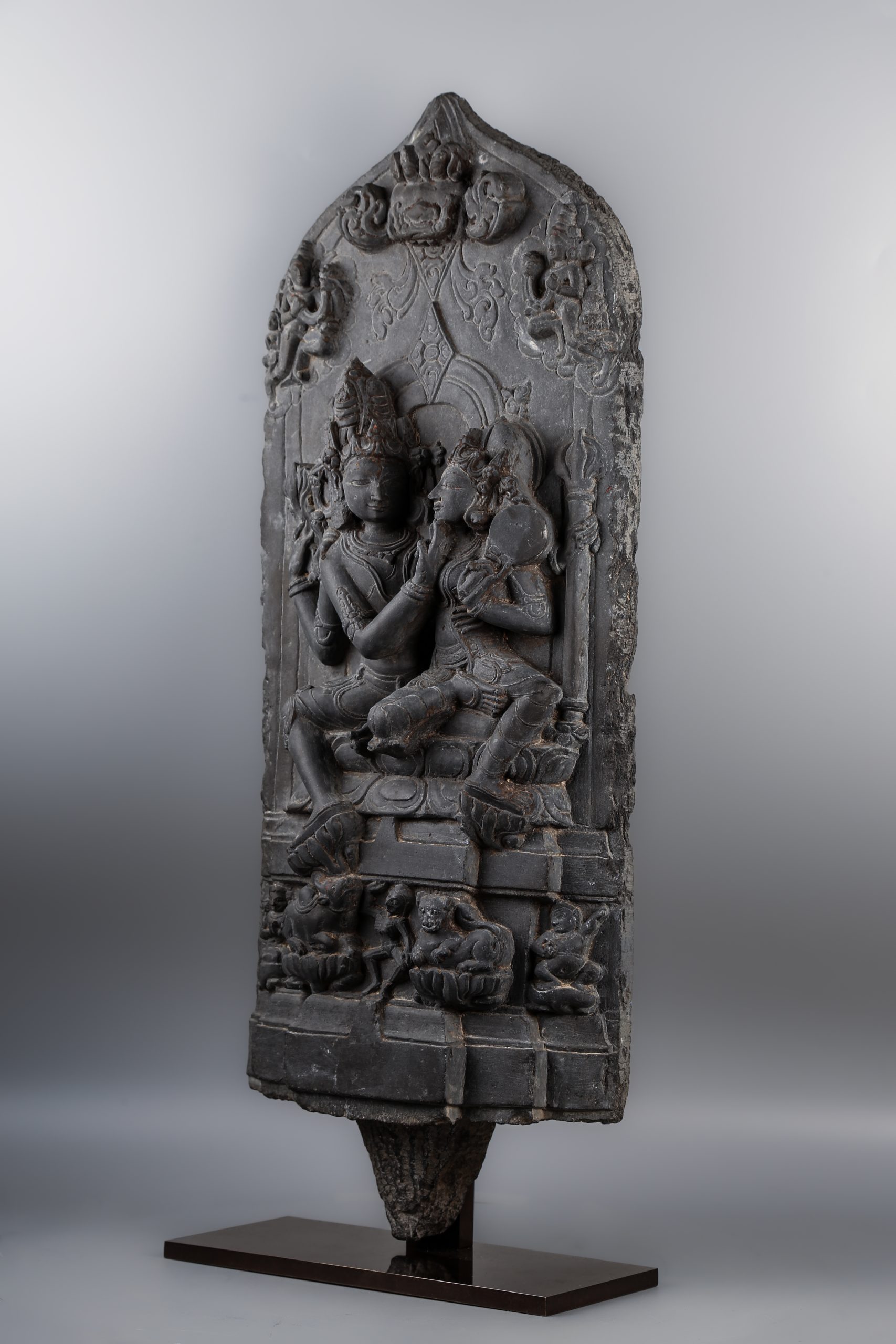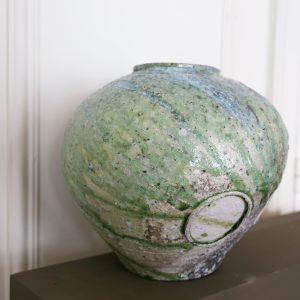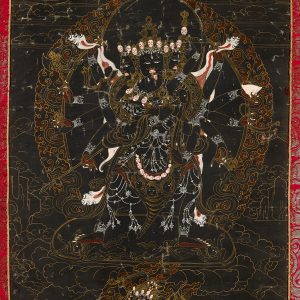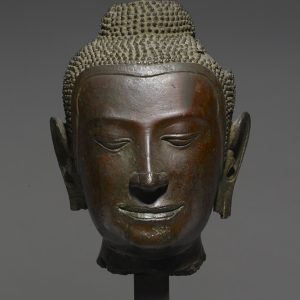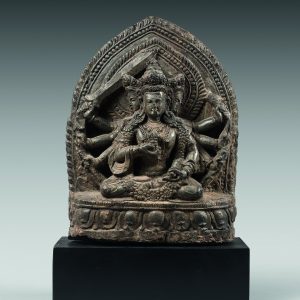Umā Maheśvara
Black stone
Eastern India
12th century, Pala period
H. 61 cm
Description
This superb stele depicts the Hindu god Śiva in his Umāmahēśvaramūrti guise. This iconography is described in two texts: the Viṣṇudharmōttara and the Rūpamaṇḍana (Rao, 1971, vol. II, Part. I, p. 132). It depicts Śiva and his wife, called in this context Umā, the “Favourable One”, sitting on the same seat, showing each other signs of attachment and often surrounded by their children and familiars. This subject can be subject to variations both in the positions of the protagonists and in the number of characters. Several large bas-reliefs in the Ellorā caves (8th century) bear witness to this. In southern India, the theme goes by the name of Sōmāskandamūrti and was the subject of numerous processional bronzes. In Nepal, present since the fifth century, Umāmaheśvara became over the centuries the śaiva iconography par excellence.
Śiva is in a relaxed position, delicately embracing his wife. The two gods seem to be looking at each other; the delicacy of the modelling hints at their tender expression. Umā holds in her hand a mirror symbolising her beauty, while her husband holds in one of his hands a lotus and a trident. Their bodies are richly adorned with various ornaments. The two divinities are not alone: at their feet, beneath the lotiform seat, stand two familiars: the Nandin buffalo and the lion, the respective mounts (vāhana) of the two divinities. Above their heads float two flying celestial creatures (vidyādhara), against a background of an ornamental floral frieze. At the very bottom of the sculpture is an orant, a figure in a position of prayer: this is probably the person who commissioned the work.
All the characteristics of Pala art can also be found in this work, which displays a high degree of refinement: the background is delicately ornamented with sinuous, elegantly shaped motifs. The modelling of the figures is supple, and the detail is manifold.
Provenance: Collection of a Japanese diplomat, acquired in Bangladesh in the 1970s (by repute).

